
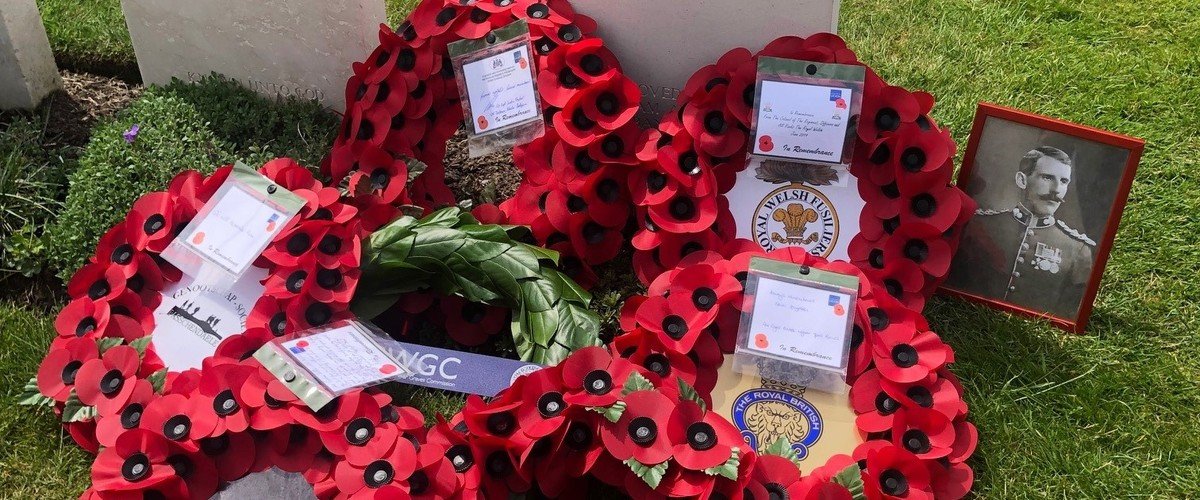
Captain William Miles Kington: Rediscovery, reunification, rededication.
At 2 o’clock on the afternoon of Wednesday 19 June, in the vast Commonwealth War Graves Commission (CWGC) cemetery of Tyne Cot near Ypres, we stood at the graveside of Captain William Miles Kington DSO, Royal Welsh Fusiliers and former Kennyite (Fearon's boarding house). The air was heavy, but the threat of thunderstorms had receded and the sun made a brave appearance. A crowd of perhaps a hundred visitors had been drawn over by the signs that there was something special going on: a colour party representing the local branches of veterans’ associations, a guard of honour from the Royal Regiment of Wales, a padre in cassock, surplice and hood. And this certainly was a special event: the Ceremony of Rededication of Captain Kington’s headstone. We had the great honour of representing his old school.
Kington was killed on 20 October 1914, struck by an artillery shell from a German field gun, but his body was only recovered in 1921. Seven years after his death, there were no indications of personal identity, only buttons and pips showing regiment and rank. When the body was moved into the new cemetery at Tyne Cot, the headstone recorded that the burial was of a Captain of the Great War, Royal Welsh Fusiliers, Known Unto God. However, there was one further piece of identification on the body which provided the final clue. The burial record showed that with the body recovered in 1921 were medal ribbons indicating that this unknown captain had fought in the South African War of 1899-1902 and had won the DSO, the second highest award for bravery in the British army. Given the huge volume of work being undertaken by battlefield clearance teams and the war graves commission, it is perhaps not surprising that this important detail was missed. And it is easy to forget that, in the pencil and paper era, searching, checking and cross-referencing data was a very difficult process. With the huge amount of information now available online, including the war burial records (available in digital form from 2014) anyone can turn their hand to helping to identify the unknown fallen of the Great War. Remarkably, three amateur enthusiasts almost simultaneously hunted down the true identity of that Captain of the Royal Welsh buried in Tyne Cot. Submitting their findings to the MoD’s Joint Casualty and Compassionate Centre, the identification was formally acknowledged earlier this year and the CWGC commissioned the new headstone which was being rededicated.
Amongst those present were Captain Kington’s four adult great-grandchildren: Anna, Jerome, Tom and Sophie. They had known almost nothing of William Kington and were clearly moved by the whole experience of discovering his history. Thanks to information supplied by the MoD, they were able before the service to visit almost the exact spot, in the middle of a field of maize near Zonnebeke, where their great-grandfather had been killed. This was a deeply poignant moment and it was an enormous honour to be present and to be representing WinColl both then and at the Ceremony, where we were able to lay a wreath on behalf of the school and to pay respects to a rediscovered member of the Wykehamical community.


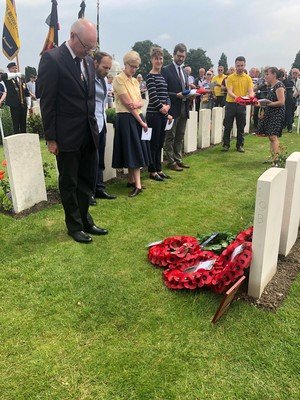
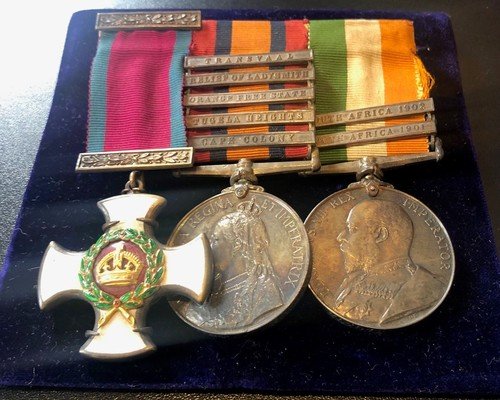
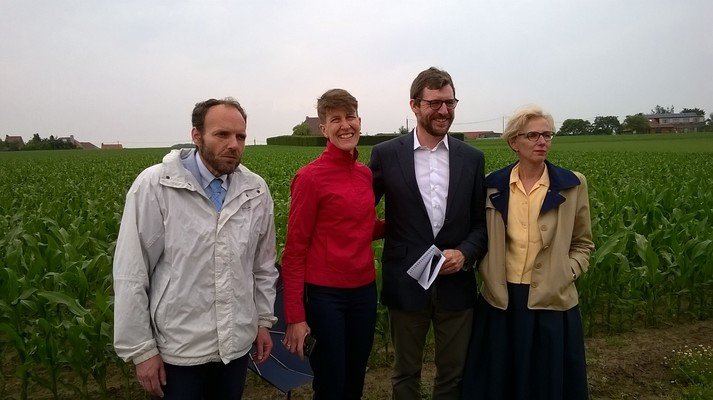
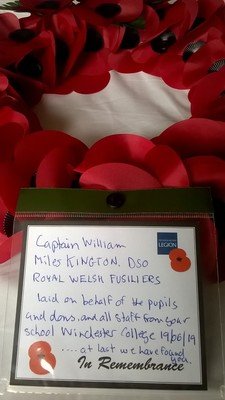
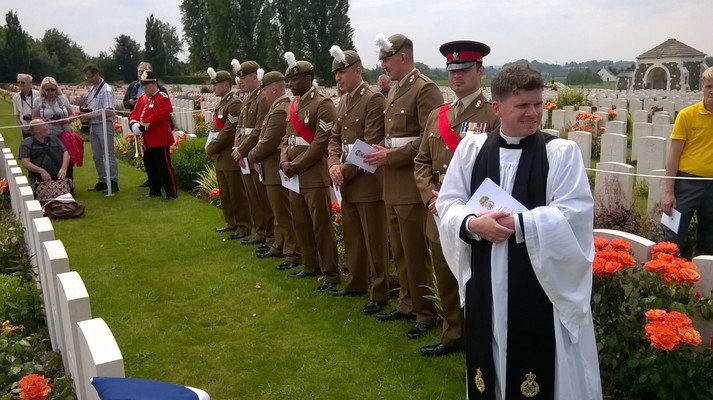
 Head back to stories
Head back to stories